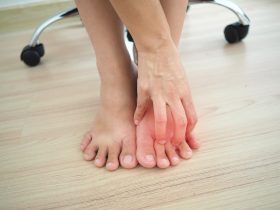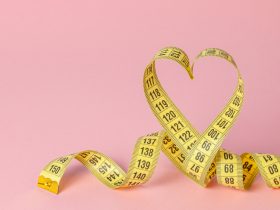The ketogenic diet is an extremely low-carbohydrate eating plan that is heavy in fat. Many people report rapid weight reduction in the first few weeks of this diet, but many more report hitting a plateau after a few months.
In this post, we’ll take a look at what can create a weight loss plateau on keto, as well as some easy ways to get through it.
What can cause a weight loss plateau when on keto?
Losing weight is not always a straight line. The ketogenic diet, like any other eating plan, can lead to weight loss plateaus. One reason why weight loss may stall is that your metabolic rate naturally decreases as you trim down. If you’ve hit a plateau in your weight loss efforts, it may be time to reconsider your macronutrient ratio and start keeping closer track of your food intake.
You may find that you need to cut back even more on the carbohydrates and protein that your body uses to produce glucose (sugar). Ketosis, the metabolic state where fat is used for fuel, may not be reached if glucose intake is too high. A calorie deficit is necessary for weight loss, and if you consume too many calories from high-fat foods, you may not be able to create one.
You may be hitting a weight reduction plateau for a variety of reasons, some of which are not directly related to your diet or exercise routine. Although plateaus are normal on the ketogenic diet, you should see a doctor if they persist along with other negative symptoms like headaches, lethargy, diarrhea, and nausea.
The so-called “keto flu” that some people experience when they initially start the ketogenic diet usually goes away after a few days or weeks.
Weight loss on keto: How to get beyond a plateau
Reduce your calorie consumption
The ketogenic diet is one of the few that doesn’t call for calorie counting. This is due to the high fat and protein content of many of the diet’s staple items, both of which contribute to satiety and hence reduce calorie intake. But if you’re at a weight loss plateau, it could be because you’re eating too much.
Be mindful of your portion sizes and choose low-calorie items to nibble on if you’re trying to lose weight.
Lessen your anxiety
If you’ve hit a weight-loss plateau, it’s worth thinking about whether or not your current habits are to blame. In particular, some studies have found a connection between persistent stress and gradual weight gain. Maintaining high levels of the stress hormone cortisol has been linked to decreased energy expenditure and increased food consumption, both of which may contribute to weight gain in susceptible individuals.
Reduce stress and aid in weight reduction by giving yourself regular breaks, establishing a self-care regimen, establishing a better sleep schedule, and embracing activities like yoga or meditation.
Watch out for sneaky carbohydrates
If you’re not losing weight despite following the ketogenic diet, you may need to reduce the number of carbohydrates you’re eating. A few additional grams of carbohydrates here and there might pile up and make it difficult to achieve ketosis.
The recommended daily carbohydrate intake on the ketogenic diet is between 20 and 50 grams. Make sure to include hidden carbs from items like processed meats, condiments, seasonings, and starchy veggies when calculating your daily carb consumption or using meal tracking software.
Do some cycle fasting
Intermittent fasting consists of alternating periods of fasting with periods of normal eating. In conjunction with the ketogenic diet, it may help you reach ketosis more quickly by shifting your body’s major fuel source from sugar to fat. It’s possible that intermittent fasting’s increased metabolic rate can help with fat loss as well. It has also been shown to reduce hunger and calorie consumption, which can be helpful for weight loss.
There are many other approaches to intermittent fasting, but 16:8 fasting is a good place to start because it’s simple and effective. Dietary consumption is restricted to a daily window of 8 hours.
Alter your normal exercise schedule
The calorie deficit that increased physical activity creates may aid in weight loss. Increased physical activity is what creates the calorie deficit. In addition to promoting muscle growth and protecting against chronic disease, it can also increase life expectancy.
The minimum recommended amount of moderate-to-vigorous exercise per week is 150 minutes. In addition to the tried-and-true options of running, cycling, swimming, and weight training, you may try something new to spice up your workouts.
Weight loss stalls are extremely common while following the keto diet, and there are a variety of reasons why this may occur. It is essential, however, to examine the general trends in your weight and to think about other markers of progress, such as improvements in mood and energy levels.
You can also attempt numerous different tactics, such as limiting your carbohydrate or calorie consumption, increasing the amount of exercise you do, and minimizing the amount of stress you are under, in order to assist you in breaking through your plateau.
















Find Us on Socials